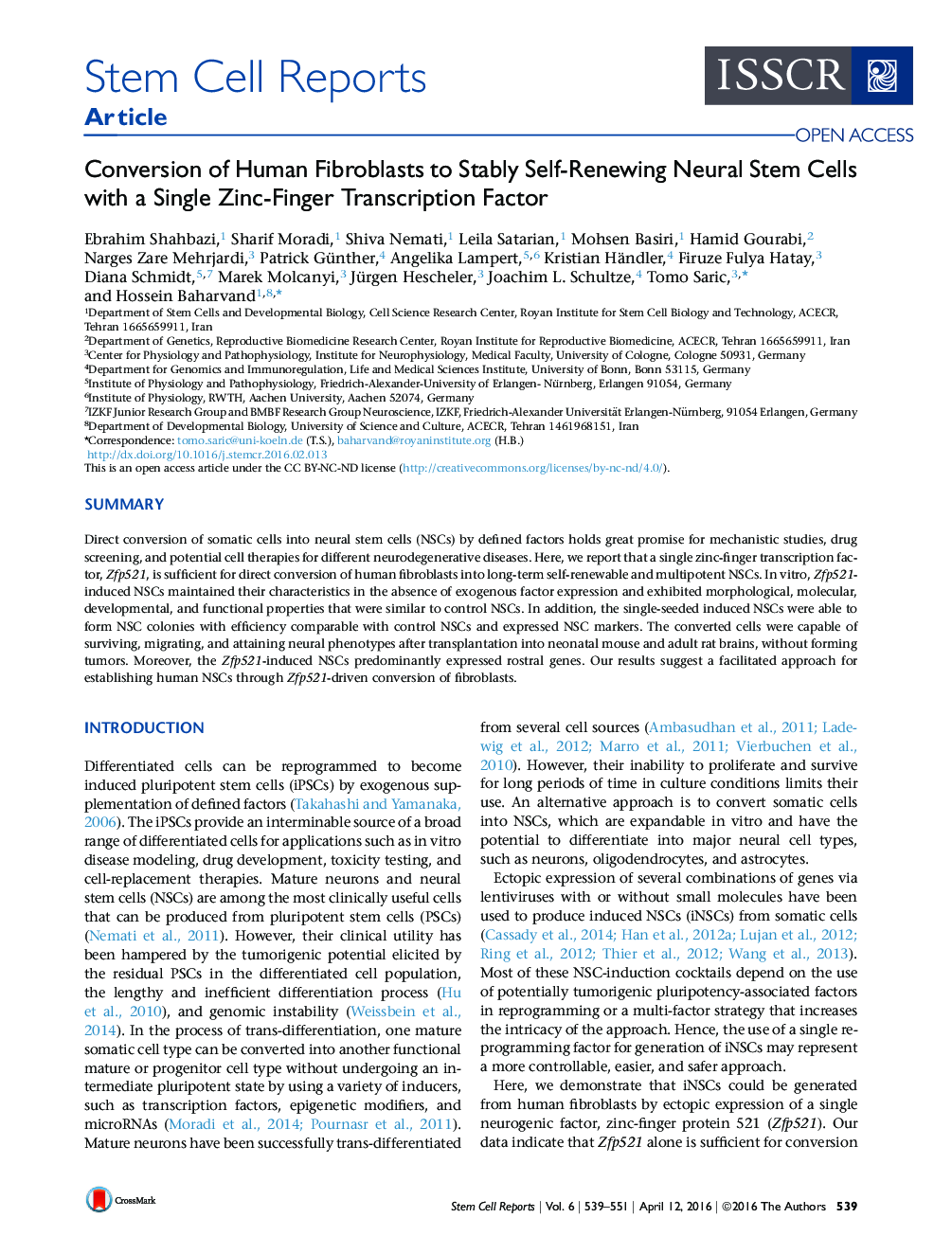| Article ID | Journal | Published Year | Pages | File Type |
|---|---|---|---|---|
| 2093445 | Stem Cell Reports | 2016 | 13 Pages |
•ZFP521 can directly convert human fetal, neonatal, and adult fibroblasts into NSCs•iNSCs exhibit NSC properties, i.e., markers, long-term self-renewal, and tripotency•ZFP521-iNSCs predominantly express rostral markers•Single-seeded ZFP521-iNSCs are clonogenically comparable with control NSCs
SummaryDirect conversion of somatic cells into neural stem cells (NSCs) by defined factors holds great promise for mechanistic studies, drug screening, and potential cell therapies for different neurodegenerative diseases. Here, we report that a single zinc-finger transcription factor, Zfp521, is sufficient for direct conversion of human fibroblasts into long-term self-renewable and multipotent NSCs. In vitro, Zfp521-induced NSCs maintained their characteristics in the absence of exogenous factor expression and exhibited morphological, molecular, developmental, and functional properties that were similar to control NSCs. In addition, the single-seeded induced NSCs were able to form NSC colonies with efficiency comparable with control NSCs and expressed NSC markers. The converted cells were capable of surviving, migrating, and attaining neural phenotypes after transplantation into neonatal mouse and adult rat brains, without forming tumors. Moreover, the Zfp521-induced NSCs predominantly expressed rostral genes. Our results suggest a facilitated approach for establishing human NSCs through Zfp521-driven conversion of fibroblasts.
Graphical AbstractFigure optionsDownload full-size imageDownload as PowerPoint slide
